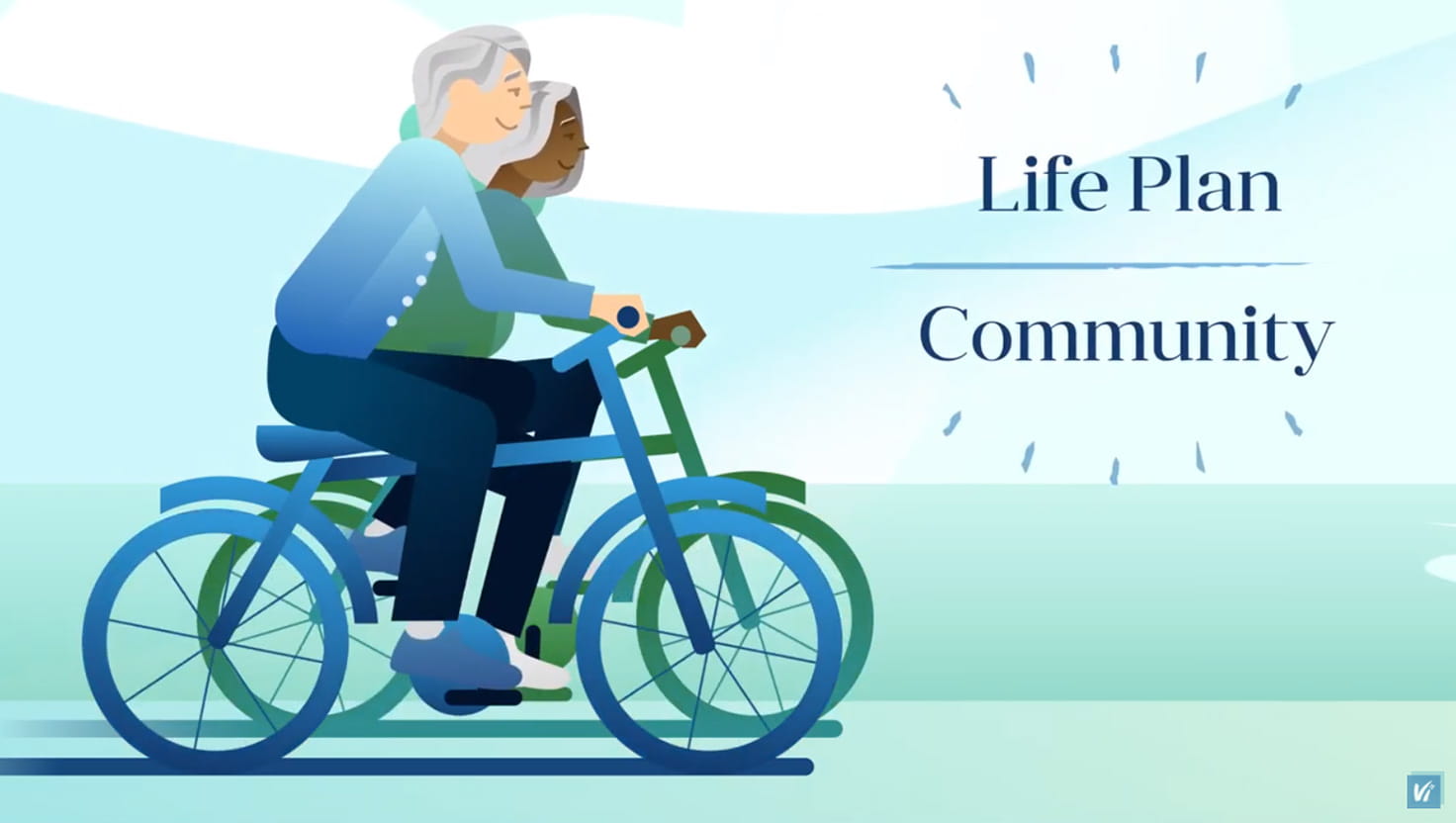The retirement landscape has really changed in the past few decades — and that’s due in part to the simple fact that Americans are living a lot longer than they did before.
According to the Hamilton Project, the likelihood of a 65-year-old reaching their 90th birthday more than doubled in the past 50 years (1965–2015). That means you may have decades to enjoy life after retirement — and lots of senior living options to help you make the most of those years!
The phases of retirement
With that in mind, you can almost think of retirement in phases:
- Phase 1 is all about finding happiness in retirement: You leave your career and embrace your time off, perhaps with more travel, golfing and enjoying your family and friends. During phase 1, you might also relocate to a warmer climate, a city with a higher population of older adults like you, or even a 55-and-older retirement community.
- In Phase 2 of retirement, we begin to consider the realities of aging a bit — including pragmatic thoughts of ensuring we can access the care we may need later on. These thoughts can arise for many reasons, including nagging soreness in the morning, witnessing the struggles of friends or peers, or even the loss of a loved one.
In Life Plan Communities, many seniors are finding the best of both phases of retirement: the sense of freedom to enjoy their retirement in unique and meaningful ways, plus the comfort of having a plan in place for securing care in the future, should they need it.
“More than 90 percent of the people who walk through our doors are already retired,” said Amy Rosen, sales director at Vi at Aventura, near Miami. “Many start as snowbirds who buy a condo and come for the winter. Then they fully retire to Florida, and later on they find themselves looking for something more: They want to know their potential care is planned for.”
What is a Life Plan Community?
Life Plan Communities offer residents a range of independent living options with a plan for potential care, from independent to assisted living, skilled nursing to memory care, should their needs change. We've created this short video to break down the features of this model.

Retirement living in a Life Plan Community
Let’s take a look at some of the benefits of Life Plan Communities as a senior living option.
A lifestyle that adapts to your needs
Life Plan Communities offer residents plenty of opportunities to choose how they spend their days, living life on their terms — and that offering grows and changes as their needs change. “People often think of senior-living communities based on what their needs are in that moment — but you also have to think about what your needs might be in the future,” said Kelly Parkins, sales director at Vi at La Jolla Village near San Diego.
For example, many senior living communities offer valet parking, and residents are free to come and go as they please to enjoy retirement beyond the community. But if residents decide to stop driving for any reason, some communities offer shuttle service and other transportation options to help them keep moving.
For residents who simply want to take advantage of activities closer to home, there’s a range of programming and activities to enjoy in a Life Plan Community, such as:
- Group and one-on-one fitness classes for varying activity levels
- Lectures from local area experts and educators as well continuing-education opportunities
- Community clubs that present opportunities to cultivate new hobbies
- Organized outings with neighbors and friends to area cultural attractions
- Team sports leagues and clubs, like bocce, golf, swimming and more
Life Plan Communities afford access to these activities consistently, and immediately within reach, even virtually when needs arise, which becomes increasingly valuable as residents age.
Retirement living’s built-in community
Socially, Life Plan Communities offer a smooth transition out of one phase of retirement and into another.
Many older adults who move into Life Plan Communities continue spending time with their large social networks of friends and family outside the community for many years. But, as some friends and family move away to pursue their own retirement wants and needs, Life Plan Community residents will have been able to develop friendships with fellow residents organically.
“If you move into a Life Plan Community early on, you can keep enjoying life the way you’re living it now — but also have time to develop those close relationships within that community that grow with you as you age,” Rosen said. Making a home in a Life Plan Community surrounds you with a hyperlocal support network to help you through rough patches, from the loss of a spouse or friend, recovery from major surgery and even national crises like the recent outbreak of COVID-19.
Care in a Life Plan Community: having a plan in place
Of course, the real star of the show for Life Plan Communities is the access to care they provide to residents.
Care exists on a spectrum in Life Plan Communities: Though care levels vary from community to community, many offer services from short-term rehab after an outpatient surgery to assisted living and long-term memory support, and many things in between. Best of all: Seniors who choose Life Plan Communities as their senior living option have empowered themselves to make decisions about their future care before it can become a true necessity, and while it’s still easy for them to do is. This relieves the burden on family members of researching options during a crisis. Seniors living in life plans communities know who will be providing care, should the need arise.
Where is the best place to live after retirement?
There’s a lot to think about as you move through the phases of retirement — but there’s also a lot to enjoy!
Life Plan Communities are just one of the senior living options available to older adults, and they’re the perfect choice for seniors who want to live for today while having a plan in place for future care.
Ready to learn more? Browse our Life Plan Communities resources, and reach out if you have questions!

